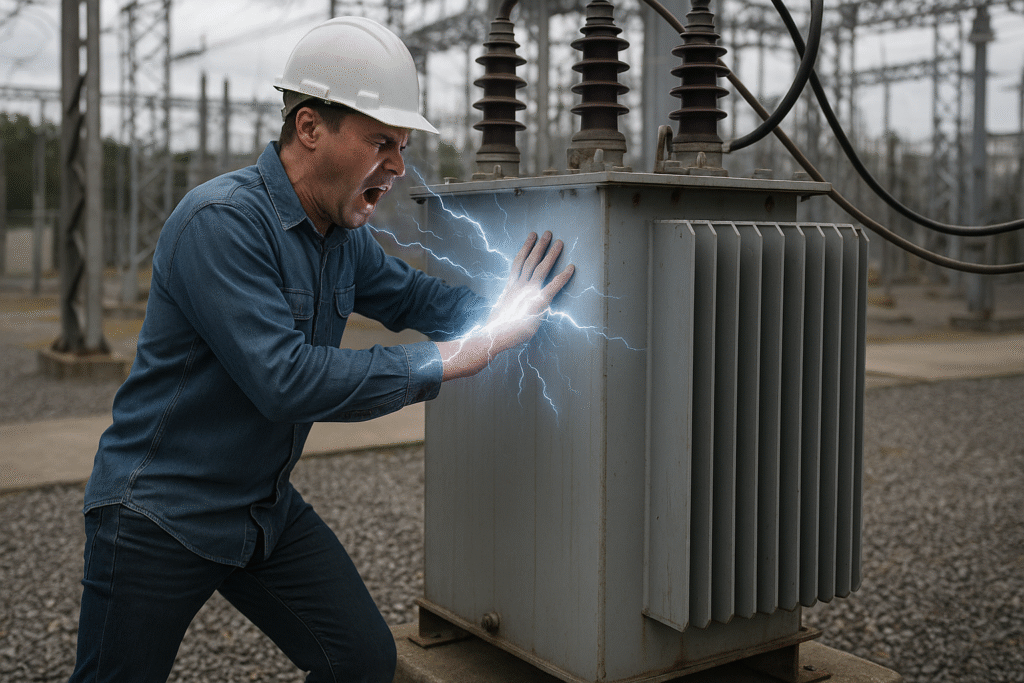Electric faults pose serious risks to human safety—often in ways not immediately visible. Two critical hazards are step potential and touch potential, both of which can lead to fatal electric shocks. In this blog, we’ll explore what they are, how they happen, and—most importantly—how you can protect yourself in such scenarios.
What Are Step and Touch Potentials?
When a fault occurs in an electrical system, such as a broken overhead transmission line conductor touching the ground while still energized, a very high voltage potential is created at the point of contact. This voltage then decreases radially outward from that fault location.
Imagine invisible circles forming around the fault point. These circles represent decreasing voltage levels—for example:
- The touching point might have 10 kV,
- One meter away might be 9 kV,
- Two meters away could be 8 kV,
and so on until the voltage neutralizes roughly 10 meters away from the center of the fault.
Step Potential: The Danger Beneath Your Feet
If a person is walking within this faulted area, they’re unknowingly putting themselves in danger. Here’s why:
When your feet are not together, each foot can be at a different potential—say, one at 8 kV and the other at 6 kV. That 2,000-volt difference forces electrical current to flow through your body, from one leg to the other. This current path can be deadly.
This phenomenon is called Step Potential.
How to Protect Yourself from Step Potential:
- Do NOT walk normally in the faulted area.
- Instead, keep your feet close together.
- Shuffle or hop to avoid creating potential differences between your feet.
This technique minimizes the voltage difference across your legs and significantly lowers the risk of electric shock.
Touch Potential: Danger from Energized Surfaces
Now, consider a different scenario: a power transformer suffers insulation failure, and the metal body becomes energized.
If someone touches this energized transformer body, there will be a voltage difference between their hand (touching the body) and feet (on the ground). That difference causes electrical current to pass through the person’s body, leading to a potentially fatal electric shock.
This phenomenon is known as Touch Potential.

Summary
| Potential Type | Source of Danger | Current Path | Protection Method |
|---|---|---|---|
| Step Potential | Ground voltage difference between feet | One leg to another | Shuffle or hop; feet together |
| Touch Potential | Energized surface (e.g., transformer body) | Hand to foot through body | Do not touch metal parts during faults |
Final Thoughts
Understanding step and touch potentials is essential for electrical safety, especially for engineers, electricians, and workers in high-voltage environments. These dangers are silent but deadly, and knowing how to act quickly and correctly can save your life.
